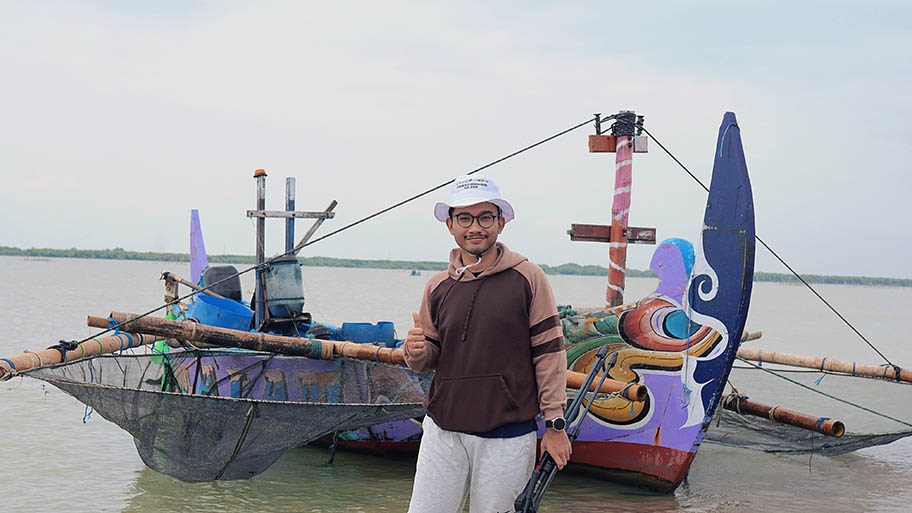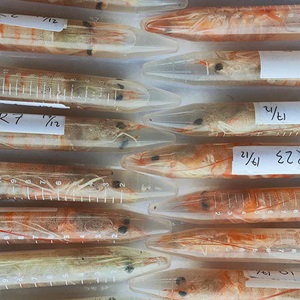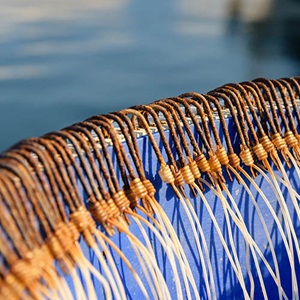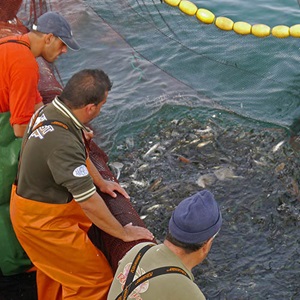Using eDNA methods, a Javan fishery will assess their catch composition allowing them to develop an action plan towards sustainable fishing and MSC certification.
- Using DNA to capture information on environmental impacts of bycatch and compare against government and enumerator data
- Developing table of species identification with IUCN status
- Generating relative abundance result for target species and creating an action plan
Start date: April 2025
£10,000
Student Research Grant
Awardee
Jasiel Karosekali, Masters student at Universitas Diponegoro, Indonesia.
Fishery
Indonesia Central Java prawn fishery
The fishery
The Central Java prawn fishery operates throughout central Indonesian waters, including the Malacca Strait, Java Sea and Makassar Strait. The fishery targets white prawns (Fenneropeneaus merguiensis), also known as banana prawns, using pot/trap and trammel net gear.
All types of fishing gear can have significant environmental impacts if not managed sustainably and trammel nets can be associated with high amounts of bycatch. In the case of the Central Java prawn fishery, the trammel net bycatch is mainly other crustaceans and fish. High bycatch could cause long-term environmental impacts, disrupting marine food chains and the ecology of the region.
To improve its environmental performance, the fishery entered the MSC Improvement Program in 2021 and hopes to enter assessment to the MSC Fisheries Standard in 2026.
As part of its improvement action plan the fishery is working closely with researchers from the Universitas Diponegoro in Indonesia. Jasiel Karosekali is a Master’s
degree student at the university whose project has been selected to receive a Student Research Grant from the MSC Ocean Stewardship Fund.
The grant will allow Karosekali to undertake a research project designed to obtain more information on
the exact composition of the bycatch. This will help the fishery make improvements and minimise its impact on the ecosystem.

What the project will do
The project aims to assess species diversity, distribution, habitat origin and conservation status of the fishery’s non-target crustacean and fish catch.
To gather this data Karosekali will use a technique known as eDNA (environmental DNA) metabarcoding. This method allows researchers to collect fragments of DNA from the marine environment - frequently from a single sample - and match the genetic characteristics to ones stored as barcodes in global genetic databases. This will establish, with molecular-level accuracy, the biodiversity present in the fishery’s range.
The data will pinpoint not only the species present in the bycatch, but every species in the fishery’s range, and it will confirm their IUCN (International Union for Conservation of Nature) status. Furthermore, the research will provide the relative percentage abundance of bycatch species in the region.
This will provide the fishery with sufficient information to make effective management strategies to help minimise its impacts on non-target species, and the wider marine ecosystem.
The results will be communicated to multiple stakeholders of the Central Java prawn fishery to ensure their informed involvement and participation in the fishery’s management. The data will also be presented via a scientific journal publication and scientific conference seminars.
“This funding will support my research and provide comprehensive biodiversity insights that can inform responsible fisheries management strategies, particularly those impacted by high bycatch levels. It will bridge the gap between cutting-edge molecular research and socio-economic considerations for effective fisheries management.”
Related projects

Indonesia Central Java prawn: Researching genetics

Aegean longline: Minimising interactions with endangered species


